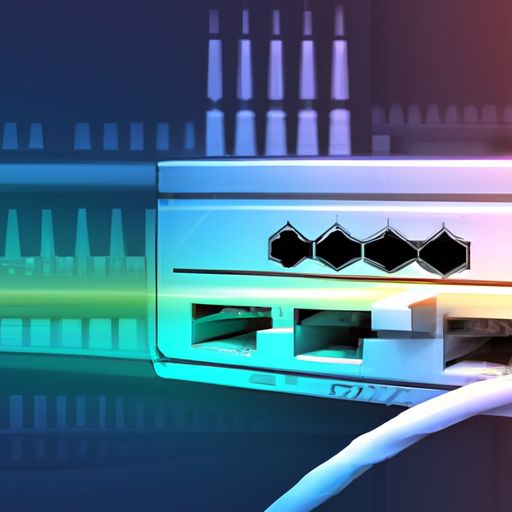How Can I Protect My Business From Phishing Attacks?
As a business owner, you know that protecting your company’s sensitive information is crucial in today’s digital age. Phishing attacks pose a significant threat, targeting both small and large businesses alike. So, how can you safeguard your business from falling victim to these deceptive tactics? In this article, we will explore practical strategies and best practices to help you protect your business from phishing attacks, ensuring the safety and security of your valuable data.
Understanding Phishing Attacks
Definition of Phishing Attacks
Phishing attacks refer to a type of cyber attack where malicious actors impersonate reputable individuals, organizations, or businesses to deceive and trick unsuspecting individuals into revealing sensitive information, such as passwords, credit card numbers, or social security numbers. These attacks typically occur through email, instant messaging, or fraudulent websites that appear legitimate, making it difficult to distinguish them from genuine communication.
Common Techniques Used in Phishing Attacks
Phishing attackers employ various techniques to manipulate individuals and exploit their vulnerabilities. Some common techniques include:
-
Email Spoofing: Attackers disguise themselves as legitimate entities by spoofing email addresses that appear trustworthy, thereby tricking recipients into believing the email came from a reputable source.
-
Phishing Links: Attackers deploy deceptive links that direct users to fraudulent websites resembling genuine ones. These websites are designed to collect personal information without the user’s knowledge.
-
Spear Phishing: This technique involves targeted attacks on specific individuals or organizations. Attackers gather information about their victims to personalize the phishing attempt, making it more convincing and difficult to detect.
-
Malware Downloads: Phishing emails may contain attachments or links that, once opened, download malware onto the victim’s computer. This malware can steal sensitive information or provide attackers with unauthorized access to a system.
-
Social Engineering: Phishers exploit human psychology by creating a sense of urgency or fear to manipulate individuals into divulging confidential information.
Understanding these techniques is crucial for businesses to recognize potential phishing attempts and take appropriate preventive measures.
Why Phishing Attacks are Dangerous for Businesses
Phishing attacks pose significant risks to businesses, leading to financial losses, damage to reputation, and potential legal consequences.
Importance of Phishing Prevention
Financial Losses and Reputation Damage
Falling victim to a phishing attack can result in substantial financial losses for businesses. Attackers can gain unauthorized access to important business accounts, steal sensitive financial information, and even initiate fraudulent transactions. These financial losses not only impact the organization but also erode the trust of customers, partners, and stakeholders.
Impact on Employee Productivity
Phishing attacks can significantly disrupt employee productivity as they spend time dealing with the aftermath of an attack. Employees may need to work with IT teams to mitigate the damage caused, change passwords, or restore compromised systems. This diversion of resources can affect business operations and hinder productivity.
Compliance and Legal Consequences
Phishing attacks can also have legal consequences. Organizations that fail to protect customer data are at risk of violating data protection laws, leading to potential legal actions, penalties, and damage to their reputation. Compliance with regulations such as the General Data Protection Regulation (GDPR) is crucial to avoid such legal repercussions.
Implementing Strong Security Measures
Email Security and Filtering
Implementing robust email security measures is essential to prevent phishing attacks. Utilizing email filters that identify suspicious or potentially harmful emails can help reduce the risk of falling victim to phishing attempts. Advanced email security software can block known phishing sources and apply machine learning algorithms to detect evolving phishing techniques.
Web Browsing Protection
Protecting against phishing attacks also involves ensuring web browsing security. Businesses should utilize secure web browsers and deploy web filtering systems that block access to known malicious websites. Regularly updating browser software and using reputable browser extensions can also enhance web browsing protection.
Firewalls and Intrusion Detection Systems
Deploying firewalls and intrusion detection systems (IDS) is crucial in safeguarding networks from phishing attacks. Firewalls act as a barrier between internal networks and external threats, monitoring and filtering network traffic. IDS systems can detect unauthorized access attempts and notify administrators to take appropriate actions.
Encryption and Data Privacy
Securing sensitive data through encryption is essential to prevent unauthorized access. Utilizing encryption technologies such as Secure Sockets Layer/Transport Layer Security (SSL/TLS) protocols for website communication, encrypting emails, and encrypting stored data contributes to a robust security infrastructure.
Network Vulnerability Assessments
Conducting regular network vulnerability assessments helps identify potential weaknesses that attackers may exploit. By proactively addressing vulnerabilities, businesses can lessen the risk of successful phishing attacks. These assessments should include testing for weak passwords, outdated software, and misconfigured systems.
Secure Password Policies
Implementing strong password policies is crucial to mitigate the risk of phishing attacks. Businesses should enforce password complexity requirements, regular password changes, and facilitate the use of password management tools. Educating employees on best practices in password security can greatly enhance the overall defense against phishing attempts.
Educating Employees
Phishing Awareness Training
Educating employees about the dangers of phishing attacks is vital in preventing successful intrusions. Businesses should provide comprehensive training programs that raise awareness of phishing techniques, teach employees how to identify phishing emails, and emphasize the importance of following secure online practices.
Recognizing Phishing Emails
Training employees to recognize common signs of phishing emails is crucial. Suspicious email characteristics such as spelling errors, grammar mistakes, non-personalized greetings, or urgent requests for sensitive information can indicate a phishing attempt. Employees should be encouraged to scrutinize emails carefully before taking any action.
Safe Email Practices
Promoting safe email practices ensures that employees understand the importance of securely handling emails. This includes refraining from opening suspicious attachments, avoiding clicking on unrecognized links, and double-checking email addresses before responding or providing sensitive information.
Avoiding Suspicious Links and Attachments
Employees should be cautious when interacting with links and attachments in emails. Hovering over links to verify their destination before clicking, and scanning attachments with reputable antivirus software can significantly reduce the risk of falling victim to phishing attacks.
Securing Personal Information
Educating employees about the importance of safeguarding personal information is crucial to prevent data breaches. Emphasize the significance of not sharing passwords, login credentials, or personal details with unauthorized individuals or through unsecured channels.
Reporting Potential Phishing Attempts
Establishing a culture of open communication is vital in combating phishing attacks. Encourage employees to report any suspicious emails or potential phishing attempts to IT or security teams promptly. This enables swift action to be taken to prevent further threats and provides an opportunity to analyze evolving attack techniques.
Implementing Multi-Factor Authentication
Understanding Multi-Factor Authentication
Multi-factor authentication (MFA) adds an extra layer of security to the login process by requiring users to provide additional verification factors beyond their username and password. These factors may include fingerprints, security tokens, or one-time passwords generated through authentication apps. MFA significantly reduces the risk of unauthorized access, even if passwords are compromised.
Enabling Multi-Factor Authentication for Applications
Businesses should prioritize implementing MFA across their applications and systems. Enabling MFA ensures that even if an attacker obtains a user’s password, they would still require additional verification, significantly reducing the likelihood of successful phishing attacks.
Using Security Keys for Enhanced Protection
Security keys, often in the form of physical devices, offer robust protection against phishing attacks. These keys provide a secure means of authentication and can be used in conjunction with MFA to protect sensitive accounts and data. Encouraging employees to use security keys adds an extra layer of defense against phishing attempts.
Regular Security Updates and Patching
Importance of Software Updates
Regularly updating software is essential to maintain a secure environment. Software updates address vulnerabilities identified by developers, making it vital to install updates promptly. By keeping software up to date, businesses can mitigate the risk of attackers exploiting known weaknesses through phishing attacks and other methods.
Maintaining Up-to-Date Operating Systems and Applications
Operating systems and applications should be regularly updated to include the latest security patches and bug fixes. Promptly installing updates helps protect against phishing attacks targeting software vulnerabilities, ensuring that businesses stay ahead of emerging threats.
Automatic Patching and Vulnerability Management
Implementing automatic patching and vulnerability management procedures streamlines the process of keeping systems up to date. By automating the installation of security updates, businesses can reduce the risk of human error and ensure that critical patches are promptly applied across their infrastructure.
Monitoring and Incident Response
Implementing Security Information and Event Management (SIEM)
Security Information and Event Management (SIEM) systems help monitor network traffic, detect suspicious activities, and enable rapid response to potential phishing attacks. By aggregating and analyzing security events, SIEM systems provide real-time insights into potential incidents, facilitating proactive measures to mitigate risks.
Real-time Phishing Monitoring
Employing real-time phishing monitoring tools allows businesses to proactively identify and respond to ongoing phishing attacks. These tools monitor communication channels and web traffic, flagging suspicious activities and providing immediate alerts. Real-time monitoring adds a layer of visibility and enables rapid incident response before attackers can cause significant harm.
Establishing Incident Response Plans
Having well-defined incident response plans is essential to effectively manage the aftermath of a successful phishing attack. These plans outline clear steps to follow in case of an incident, ensuring that the right actions are taken promptly to minimize damage, restore systems, and communicate with relevant stakeholders.
Regular Security Audits
Conducting regular security audits helps identify any weaknesses in the organization’s security infrastructure and processes. These audits can be performed by internal or external teams and provide valuable insights into areas that require improvement or additional preventive measures. By continuously assessing security controls, businesses can enhance their resilience against phishing attacks.
Data Backup and Recovery
Regular Data Backup Procedures
Establishing regular data backup procedures is crucial to minimize the impact of successful phishing attacks. Backing up critical data frequently ensures that in the event of a breach or data loss, businesses can quickly restore their systems to a secure state without compromising sensitive information.
Off-Site Data Storage
Backing up data in off-site or cloud storage adds an extra layer of protection. Off-site storage mitigates risks associated with physical damage, theft, or localized incidents, ensuring that data remains secure even if the primary infrastructure is compromised.
Testing Data Recovery Processes
Regularly testing data recovery processes helps identify any gaps or inefficiencies that could hinder timely data restoration. By simulating various scenarios, businesses can validate the effectiveness of their backup procedures and ensure that data is recoverable when needed.
Using Anti-Phishing Tools
Anti-Phishing Software
Anti-phishing software is designed to detect and block phishing attempts by analyzing various parameters such as email content, URLs, and sender reputation. These tools use machine learning algorithms and real-time threat intelligence to accurately identify phishing emails, minimizing the risk of successful attacks.
Phishing URL Blockers
Phishing URL blockers help protect users by blocking access to known malicious websites. These tools utilize threat intelligence databases to identify and proactively block access to phishing URLs, preventing users from unintentionally landing on fraudulent websites.
Email Authentication Mechanisms (SPF, DKIM, DMARC)
Implementing email authentication mechanisms such as Sender Policy Framework (SPF), DomainKeys Identified Mail (DKIM), and Domain-based Message Authentication, Reporting, and Conformance (DMARC) significantly reduces the risk of phishing attacks. These protocols verify the authenticity of emails, ensuring that messages originate from legitimate sources and haven’t been tampered with during transit.
Staying Informed about Emerging Threats
Following Industry Updates
Staying informed about the latest trends and developments in the cybersecurity landscape is crucial in protecting businesses from emerging threats. Following reputable sources, cybersecurity blogs, and industry forums helps organizations anticipate new phishing techniques and stay informed about best practices to prevent attacks.
Collaborating with Cybersecurity Professionals
Collaborating with cybersecurity professionals and experts broadens an organization’s knowledge base and strengthens its defense mechanisms. Engaging with external partners, attending industry conferences, or participating in cybersecurity seminars and workshops exposes businesses to cutting-edge practices in phishing prevention and fosters a proactive security culture.
Participating in Information Sharing Networks
Joining information sharing networks and threat intelligence communities enables organizations to learn from the experiences of others and be alerted to emerging phishing threats. These networks facilitate the exchange of valuable information about new attack techniques and provide insights into effective countermeasures.
By understanding the nature of phishing attacks, implementing strong security measures, educating employees, and staying vigilant, businesses can significantly reduce the risk of falling victim to these malicious attempts. The proactive adoption of comprehensive protective measures is essential to safeguard sensitive information, maintain business continuity, and protect both financial assets and reputation.








